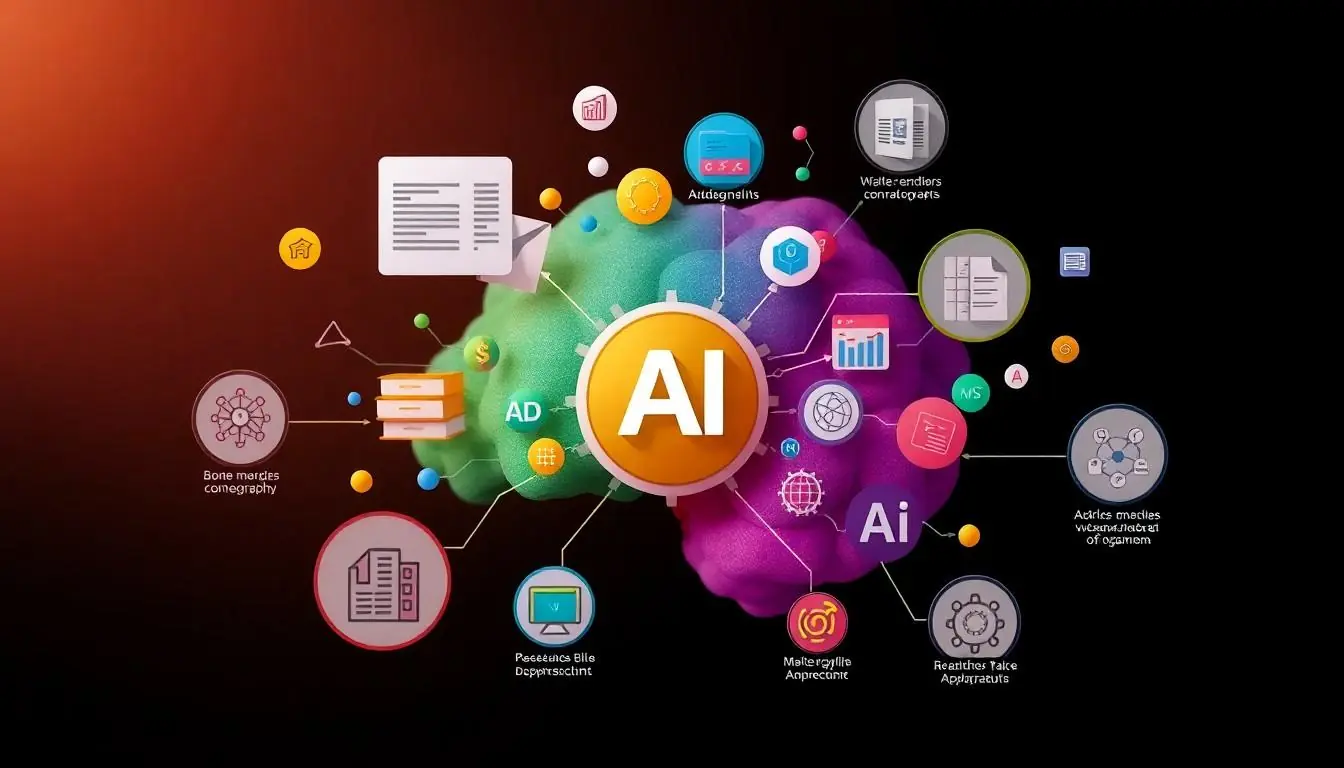Ever wondered how much brainpower goes into making ChatGPT the conversational whiz it is? Picture a library so vast it makes the Library of Alexandria look like a cozy little bookshelf. ChatGPT’s training data isn’t just big; it’s colossal, packed with knowledge from books, websites, and all sorts of digital tidbits.
Table of Contents
ToggleOverview Of ChatGPT Training Data
ChatGPT’s training data comprises a vast collection of texts sourced from diverse materials. Books, articles, websites and various written formats contribute significantly to its knowledge base. The data quantity reaches hundreds of gigabytes, reflecting an immense library of information.
Various sectors and disciplines inform this dataset. Academic writings, online discussions and even encyclopedic entries enhance the model’s understanding of language and context. This broad spectrum allows ChatGPT to engage in a multitude of topics with clarity.
Understanding the scale of this data is crucial. Trained on diverse inputs, the model processes language patterns and context nuances effectively. Such a robust foundation enables it to generate relevant and coherent responses.
The complexity of ChatGPT’s training data also plays a role in its conversational abilities. Different writing styles, tones and subject matters ensure that responses are not only informative but also engaging. This richness enhances user experience when interacting with the model.
It’s important to recognize that this data undergoes thorough preprocessing. Filtering and curation ensure high-quality input, minimizing noise and maintaining relevance. These steps contribute to the effectiveness of ChatGPT in producing accurate content.
Overall, the extensive training data significantly influences ChatGPT’s performance. Its ability to understand and generate human-like text stems from this diverse and comprehensive knowledge.
Sources Of Training Data

ChatGPT’s training data spans a wide range of sources, enhancing its ability to generate coherent text. This extensive foundation includes both textual and visual elements.
Textual Data
Textual data plays a critical role in shaping ChatGPT’s conversational capabilities. Sources for this data include books, academic articles, websites, and online forums. Each text type contributes unique language patterns and contextual knowledge. Many documents provide examples of various writing styles, from formal to informal. This variety helps the model understand and respond appropriately to diverse topics. Quality control processes ensure that the textual data remains relevant and informative. The consolidation of these sources results in hundreds of gigabytes of text, equipping ChatGPT to engage users effectively.
Visual Data
Visual data also supports ChatGPT’s performance in specific tasks. This data includes images, infographics, and diagrams, which enhance contextual understanding. Visual content contributes to a broader comprehension of various subjects, assisting in answering questions related to those images. Incorporating visual data allows the model to grasp concepts that text alone cannot convey. Using this type of data fosters a more well-rounded interaction. The model’s capacity to interpret visual cues enriches user experiences, making interactions more dynamic and informative.
Volume Of Training Data
ChatGPT’s training data represents a monumental repository of information, reflecting diverse sources and extensive topics. This vast collection significantly enhances its conversational abilities.
Comparisons With Other Models
Compared to other models, ChatGPT’s training data stands out due to its size and diversity. While smaller models might utilize tens of gigabytes, ChatGPT operates with hundreds of gigabytes of text, drawing from books, websites, and forums. Many leading models focus on specialized data sets, which limits their contextual understanding. In contrast, ChatGPT’s broad training enables it to engage in varied conversations and topics, ensuring comprehensive knowledge retention.
Implications Of Data Size
The extensive size of ChatGPT’s data has far-reaching implications. Improved knowledge breadth allows for more accurate responses across different subjects. With increased training material, ChatGPT addresses user inquiries with greater clarity. Enhanced language understanding leads to interactions that feel more natural and engaging. Data variety strengthens ChatGPT’s ability to adapt to user needs, enabling personalized and relevant responses for each query.
Limitations Of Training Data
Training data limitations impact ChatGPT’s performance. Despite the extensive volume, certain topics may lack depth due to insufficient data representation. Less prominent subjects often receive less coverage, leading to gaps in knowledge. Variability in language sources creates inconsistency in responses, potentially confusing users. Mixed quality of data sources also introduces the risk of inaccuracies.
Preprocessing data aims to filter out poor-quality text, but it cannot eliminate all errors completely. Some nuances of language may remain underrepresented, affecting the model’s ability to interpret tone or sentiment accurately. Furthermore, out-of-date information may persist, which can lead to outdated references in responses. This limitation emphasizes the importance of continuous updates in training data.
ChatGPT derives its understanding from the data it has, but the breadth does not guarantee comprehensive insights into every topic. Knowledge about niche or specialized areas might be limited. Users often find that while general inquiries receive accurate answers, intricate queries may not meet expectations. Moreover, the absence of current events or real-time data can restrict the model’s responsiveness to recent developments.
Each limitation underscores the balance between data size and the quality of knowledge synthesis. Maintaining relevance and accuracy remains vital for user satisfaction. Addressing these gaps requires ongoing efforts in refining and updating the training data. ChatGPT demonstrates its capabilities through well-curated data, but understanding these limitations aids in setting realistic expectations for interactions.
Future Directions In Training Data Expansion
Future training data expansion for ChatGPT focuses on integrating a wider array of sources. Researchers emphasize enhancing the diversity of text-based materials, looking at niche publications and underrepresented topics. This approach aims to fill knowledge gaps, especially in specialized areas where previous data may lack depth.
Visual data sources are also targeted for incorporation. Photographs, videos, and infographics can provide contextual understanding and improve response relevance, which enriches user interaction. By diversifying the media types, the training data will better support answers to visually oriented queries.
Maintaining high-quality standards remains a priority. Processes for quality control must evolve alongside data expansion, filtering out inaccuracies and ensuring relevance. Continuous evaluation of data sources helps in identifying valuable information and eliminates outdated or less credible content.
To address variability from mixed sources, developers are exploring advanced algorithms. These algorithms can standardize input quality, ensuring consistent language patterns and tone across training materials. With improved consistency, user experiences are likely to become more dependable and coherent.
Updates to the training data will occur regularly. As new information emerges, timely incorporation ensures ChatGPT’s knowledge remains current and aligned with real-world developments. Staying ahead of trends keeps responses relevant and accurate in dynamic conversational contexts.
By prioritizing these future directions, ChatGPT’s capabilities in delivering insightful and engaging interactions will undergo substantial enhancement. Continuous refinement of training data significantly enriches the model’s ability, demonstrating a commitment to providing users with balanced, trustworthy, and informative responses.
ChatGPT’s training data serves as the backbone of its conversational prowess. The diverse and extensive nature of this data not only enhances its understanding of language but also enriches user interactions. By continually refining data quality and incorporating a broader range of sources, developers aim to address existing limitations and improve response accuracy.
The commitment to regular updates ensures that ChatGPT remains relevant and equipped to handle emerging topics. As advancements in training data expand, users can expect even more dynamic and informative interactions. This ongoing evolution reflects a dedication to providing balanced and trustworthy responses, solidifying ChatGPT’s role as a valuable conversational partner.









